
Le succès de Bette Davis tient moins à la perfection de ses traits qu’à un talent indéniable et à une rage de réussir hors du commun. Il est vrai qu’il s’en faut de beaucoup que la beauté de Bette Davis soit parfaite : des yeux bleus à fleur de tête, un front bombé, trop large, une bouche mince dont les commissures sont tournées vers le bas, son visage est loin de répondre aux canons hollywoodiens de la beauté idéale. C’est la première chose qu’elle apprit à son arrivée à Hollywood : alors qu’il était prévu que, dans son premier film, The bad sister de Hobart Henley, elle interprète le personnage d’une jeune fille coquette, courtisée par plusieurs jeunes hommes, elle fut informée au dernier moment que les studios avaient changé d’avis, qu’il lui était désormais attribué le rôle de la sœur de l’héroïne principale, une jeune fille effacée, puritaine, qui n’ose avouer sa flamme à l’élu de son cœur. C’est ainsi qu’elle connut dans la première moitié des années 1930 le destin des actrices qui ne peuvent prétendre incarner une image de séduction absolue : cantonnée à des rôles insignifiants dont le seul objet était de servir de faire-valoir à l’héroïne principale ou, dans le meilleur des cas, à un personnage de fille de mauvaise vie au grand cœur, Bette Davis ne put donner toute la mesure de son talent. Nombreux furent ceux qui, dans les années 1930, raillèrent son manque de sensualité dans les films qu’elle tourna pour la Warner. Au regard de débuts aussi décevants, l’étonnant est que Bette Davis soit devenue une star. Si, selon Edgar Morin, les traits distinctifs d’une star sont la beauté, la jeunesse et la sur-personnalité, il est clair que ce n’est pas grâce aux deux premiers que Bette Davis est parvenue à marquer de son empreinte le cinéma hollywoodien classique.
Bette Davis a mené sa carrière avec la même lucidité que celle qu’elle a communiqué aux personnages qu’elle a interprétés : ayant compris qu’elle ne pourrait jamais représenter l’image de la beauté immaculée ni incarner un fantasme érotique, elle a choisi, pour accéder à la notoriété, de transgresser les codes du glamour hollywoodien. De L’emprise à Femme aimée est toujours jolie en passant par La vie privée d’Elisabeth d’Angleterre, elle a réussi, par un maquillage outrancier, à se rendre effrayante de laideur. Des stars féminines de sa génération, elle se démarque en ce qu’elle est devenue célèbre non pas en sublimant mais en maltraitant son image. L’intelligence de Bette Davis est d’avoir mis son humiliation physique au service de ses personnages. Ainsi, l’enlaidissement qu’elle s’inflige dans Qu’est-il arrivé à Baby Jane ? confère une épaisseur humaine au personnage qui martyrise Joan Crawford qu’elle campe avec gourmandise. C’est que la laideur de l’héroïne à laquelle elle prête ses traits, outre qu’elle est le reflet de son désordre mental, est un des ressorts psychologiques de son sadisme. A la vision de la scène récurrente dans sa carrière dans laquelle elle contemple défaite le spectacle qu’offre son miroir, on réalise que nulle star féminine plus que Bette Davis n’a osé montrer combien était douloureuse la relation à son image. Rarement une star hollywoodienne aura à ce point signifié qu’elle n’aimait pas son physique. Ce rapport masochiste à son physique a contribué non seulement à humaniser les monstres qu’elle incarne mais en outre à accroître sa popularité en mettant en lumière ses complexes physiques.
A défaut de pouvoir incarner des héroïnes d’une beauté rayonnante, Bette Davis a construit sa carrière en interprétant des femmes à la beauté fanée. De la réticence de la plupart des actrices à se vieillir à l’écran, Bette Davis a tiré un profit considérable : les performances qu’elle a réalisées à peine âgée d’une trentaine d’années dans La vie privée d’Elisabeth d’Angleterre où elle paraît le double et dans La vipère où elle joue une mère de famille dont la fille a une vingtaine d’années, ont largement contribué à asseoir sa réputation d’actrice. Rares sont les comédiennes dont la personnalité les prédispose à incarner tous les âges de la vie : si, à force de représenter des figures d’ingénue, l’image qu’évoque des actrices comme Audrey Hepburn ou Teresa Wright est celle de la candeur de la jeunesse, le lot de Bette Davis a été de prêter ses traits à des femmes au couchant de leur vie. La façon dont elle a réussi à rendre sensible la vulnérabilité des personnages qu’elle a interprétés de vedettes tombées dans l’oubli (L’intruse, La star), taraudées par la peur de vieillir, est la meilleure preuve de son talent. La légende de Bette Davis tient pour beaucoup au relief qu’elle a donné dans Eve, le film célèbre de Mankiewicz, au personnage de Margo Channing, amoureuse d’un homme beaucoup plus jeune qu’elle, dont l’hystérie procède de sa hantise de la déchéance physique. Troublant est le plaisir qu’elle a pris non pas à cacher mais à arborer les outrages du temps. Jusqu’où est allé son désir de montrer combien la décrépitude de la vieillesse est hideuse, on le mesure à la vision de Qu’est-il arrivé à Baby Jane ? et de L’argent de la vieille où, par un usage grotesque du maquillage, par un fond de teint plâtreux, elle confère à son visage l’allure d’un masque effrayant. Si, de l’esthétique hollywoodienne du glamour, Bette Davis s’est émancipée, elle s’est en revanche rangée, en refusant de jeter un voile pudique sur la corruption de la chair, sous la bannière de la morale protestante qui enseigne que la beauté est un masque de vanité.
L’étonnant dans le succès de Bette Davis est qu’il s’est construit, à la différence de la plupart des stars féminines, sur l’image d’une femme inapte à l’amour. Nul doute que le public féminin s’est montré sensible au sort des héroïnes qu’elle a interprétées qui, faute d’une beauté ou d’une jeunesse éclatante, s’épuisent à trouver le chemin de l’amour. Ne faudrait-il qu’une preuve du féminisme de Bette Davis, on la trouverait dans le fait qu’elle a érigé son personnage de star sur les décombres de l’idée que l’amour est un sentiment consubstantiel à la nature féminine. Au nombre des rôles les plus marquants de sa carrière qui battent en brèche ce préjugé figurent ceux qu’elle a joués dans des films qui relèvent du mélodrame de la femme indépendante. Le propre de ce sous-genre hollywoodien est de mettre en scène une femme dont l’attitude infirme l’idée que la passivité est un attribut féminin. Que ce soient Julie Marsden dans L’insoumise, Judith Traherne dans Victoire sur la nuit ou Fanny Skeffington dans Femme aimée est toujours jolie, les héroïnes qu’elle incarne présentent le même profil psychologique : hyperactive, indépendante, intelligente, cassante, indocile, tout, dans leur caractère, indique qu’elles répugnent à se fondre dans le moule de la société conservatrice américaine.
Mais terrible est le châtiment qu’elles subissent pour avoir osé enfreindre les lois de la bienséance sociale. A l’exemple des héros tragiques, leur salut réside dans l’expiation de leur faute. L’objet du mélodrame de la femme indépendante n’est pas de faire l’éloge de l’émancipation féminine mais d’inciter les femmes à se réconcilier avec leur rôle social : enfin dessillées par l’épreuve qu’elles traversent, elles réalisent à l’approche de la mort que l’amour est leur raison d’être. Parce qu’elle relève d’un apprentissage tragique, les promoteurs du mélodrame de la femme indépendante portent un regard très sombre sur la féminité.
De l’audace, il en a fallu à Bette Davis pour interpréter des héroïnes indignes de tout pardon : si nombreuses sont les vedettes féminines à avoir représenté des personnages mus par une folie démoniaque (Gene Tierney dans Péché mortel, Jean Simmons dans Un si doux visage ), plus rares sont celles comme Bette Davis à avoir osé prêter leurs traits à des femmes en proie à une haine féroce. Celle-ci trouve sa source dans leur insatisfaction conjugale : Leslie Howard dans l’Emprise, Herbert Marshall dans La vipère, Joseph Cotten dans La garce, auxquels le destin les a liés, sont des hommes falots, faibles et crédules, sur lesquels plane l’ombre de l’impuissance. Regina Giddens dans La vipère et Rosa Moline dans La garce enragent que leur mari ne leur ait pas permis d’accomplir leur désir l’élévation sociale. Leur méchanceté ne procède ni d’une pulsion sadique ni d’un penchant naturel pour le vice mais d’un désir de vengeance. Réalisant que, en compensation de l’état d’infériorité dans lequel les place leur statut de femme mariée, elles n’ont reçu aucune gratification d’ordre sexuel ou narcissique, elles n’aspirent qu’à prendre leur revanche sur le sort que leur réserve leur mari qu’elles rendent responsables de leur malheur. Bien que commis de sang-froid, leur crime est une tentative désespérée d’échapper à l’univers carcéral du mariage. On est dès lors en droit d’interpréter leur entreprise criminelle comme un acte de rébellion contre l’aliénation à laquelle les condamne leur mariage. Que les ressorts qui animent Rosa Moline et Regina Giddens soient l’avidité et la cupidité, des vices présentés comme typiquement masculins dans le cinéma hollywoodien, est un des indices les plus probants de leur désir d’accéder par le crime au pouvoir symbolique masculin.
A la haine du couple s’ajoute chez les héroïnes maléfiques incarnées par Bette Davis la haine de la famille. De Rosa Moline qui se jette dans un ravin pour avorter à une meurtrière d’enfant (Confession à un cadavre) en passant par des femmes dépourvues de tout amour maternel (Femme aimée est toujours jolie, La vipère), le rejet de la figure maternelle est un des traits marquants de sa filmographie. Parce que, par le discrédit qu’il jette sur les figures de l’épouse et de la mère, il ne répond à aucun des rôles féminins déterminés par la société, le personnage de Bette Davis a quelque chose de monstrueux. N’eût-elle pas, en représentant des femmes qui défient l’ordre social, endossé les oripeaux de la figure de la sorcière, les héroïnes maléfiques qu’elle a incarnées n’auraient pas à ce point marqué les esprits.
Stylisé, affecté, maniéré, le jeu de Bette Davis n’a rien de naturel. Son style est reconnaissable entre tous : des mains agitées, des yeux scrutateurs, une élocution saccadée, une voix éraillée sous le coup de la colère sont les traits les plus saillants de sa technique de jeu. Son style aux accents hystériques, lourd de rage contenue, est le fruit d’une éducation placée sous le signe du refoulement : à dénombrer les héroïnes auxquelles elle a prêté ses traits rongées qui par le ressentiment, qui par l’envie, qui par la culpabilité, on réalise tout le parti qu’elle a tiré de son potentiel névrotique. Les rôles que Bette Davis a choisis apportent un éclairage précieux sur sa personnalité : à la lumière de sa filmographie, il apparaît que sa névrose, plus que dans la répression de ses désirs sexuels, s’enracine dans la frustration identitaire de ne pas être un homme. Il est tentant d’interpréter la théâtralité de son jeu comme l’expression de ce malaise identitaire. Que Bette Davis n’ait cessé durant sa carrière d’interpréter des femmes aux allures masculines n’est pas l’effet du hasard. Il s’en faut de loin que les traits de caractère des femmes qu’elle a incarnées répondent à l’image traditionnelle de la féminité : le goût du pouvoir et de la compétition, le courage, la dureté de cœur, la tendance autodestructrice qu’elles montrent sont autant d’attributs dans le cinéma hollywoodien du sexe fort. On ne sait s’il faut louer Bette Davis pour avoir su mieux que nulle autre actrice donner un pendant féminin à la figure du dur à cuire. En ce qu’elle a bâti sa carrière sur sa difficulté à réaliser son identité féminine, Bette Davis occupe une place unique dans le cinéma classique hollywoodien.
---------------------------------------------------------------------------------------------------------37 films parheus
| 1013 vues | 5 personnes ont
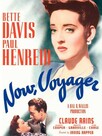 1(1942)Drame | 1h57
1(1942)Drame | 1h57 Theus“ Beau mélodrame hollywoodien où l'on prend plaisir à voir le vilain petit canard se transformer en cygne. ” — Theus12 avril 2013
Theus“ Beau mélodrame hollywoodien où l'on prend plaisir à voir le vilain petit canard se transformer en cygne. ” — Theus12 avril 2013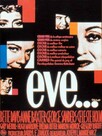 2(1950)Drame | 2h18
2(1950)Drame | 2h18 Theus“ L'un des meilleurs films sur le théâtre et le star system. Bette Davis trouve ici un de ses plus beaux rôles. ” — Theus6 avril 2013
Theus“ L'un des meilleurs films sur le théâtre et le star system. Bette Davis trouve ici un de ses plus beaux rôles. ” — Theus6 avril 2013 3(1938)
3(1938) Theus“ Un joli et intelligent grain de sable sur la route de "Autant en emporte le vent" ” — Theus22 avril 2013
Theus“ Un joli et intelligent grain de sable sur la route de "Autant en emporte le vent" ” — Theus22 avril 2013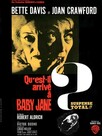 4
4 Theus“ Jouissive farce macabre où deux reines de l'écran se crachent leurs venins au visage. Bette Davis est véritablement la plus belle des garces ” — Theus24 février 2015
Theus“ Jouissive farce macabre où deux reines de l'écran se crachent leurs venins au visage. Bette Davis est véritablement la plus belle des garces ” — Theus24 février 2015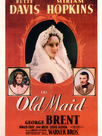 5(1939)Drame | 1h35
5(1939)Drame | 1h35 Theus“ Agréable mélo où Bette Davis et Miriam Hopkins prennent un plaisir évident à s'affronter. Bette Davis gagne haut la main ” — Theus4 mars 2018
Theus“ Agréable mélo où Bette Davis et Miriam Hopkins prennent un plaisir évident à s'affronter. Bette Davis gagne haut la main ” — Theus4 mars 2018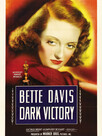 7(1939)Drame | 1h44
7(1939)Drame | 1h44Theus
“ Dépouillée de toute aura de glamour BD est épatante. Elle ne verse pas une larme mais fait baigner de pleurs les mouchoirs des spectateurs ” — Theus9 mai 2015 8(1946)Drame | 1h49
8(1946)Drame | 1h49Theus
“ Bette Davis offre une double interprétation toute en nuance dans ce petit mélo lisse et bien loin de supplanter le Double énigme de Siodmak ” — Theus11 mars 2015 9(1943)de Hal Mohr et Herman Shumlin
9(1943)de Hal Mohr et Herman ShumlinTheus
“ Sujet osé et courageux pour la période, traitant ouvertement de l’anti-nazisme. Davis humble, Watson adorable, Lukas éloquent ” — Theus9 décembre 2014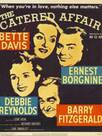 10(1956)2 micro-critiques | Sa note :
10(1956)2 micro-critiques | Sa note :Theus
“ Etude sombre et désarmante sur les parents de la mariée et le repas de noces. Davis éloignant toute forme de glamour au profit de son jeu ” — Theus11 janvier 2017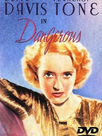 11(1935)Drame | 1h19
11(1935)Drame | 1h19Theus
“ En dépit des hurlements et pleurnicheries Bette Davis provoque l'inclination face à son personnage et sa rédemption convenue mais efficace ” — Theus13 août 2018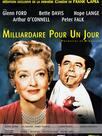 12(1961)de Frank Capra
12(1961)de Frank Capra Theus“ Des seconds rôles exquis (Peter Falk en tête) et une Bette Davis parfaite, dommage que le rythme soit souvent ralentit. ” — Theus8 décembre 2013
Theus“ Des seconds rôles exquis (Peter Falk en tête) et une Bette Davis parfaite, dommage que le rythme soit souvent ralentit. ” — Theus8 décembre 2013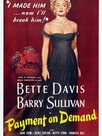 13(1951)Drame | 1h302 micro-critiques | Sa note :
13(1951)Drame | 1h302 micro-critiques | Sa note :Theus
“ L'histoire d'un divorce où se mêle émotion et créativité technique. Bette Davis, loin de ses rôles de harpies,est touchante en femme vaincue ” — Theus4 septembre 2014 14(1955)de Henry KosterDrame | 1h32
14(1955)de Henry KosterDrame | 1h32 Theus“ Bette Davis donne une 2ème interprétation tout en retenue et en profondeur de la reine.Un film d'aventures classique qui manque d'étincelles ” — Theus15 juin 2014
Theus“ Bette Davis donne une 2ème interprétation tout en retenue et en profondeur de la reine.Un film d'aventures classique qui manque d'étincelles ” — Theus15 juin 2014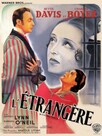 15(1940)Drame | 2h21
15(1940)Drame | 2h21Theus
“ Drame de moeurs captivant et émouvant tout en sentiments implicites. Davis et Boyer font oublier les petites longueurs du récit ” — Theus16 novembre 2014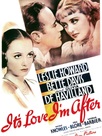 16(1937)de Archie MayoComédie | 1h303 micro-critiques | Sa note :
16(1937)de Archie MayoComédie | 1h303 micro-critiques | Sa note :Theus
“ Une petite merveille digne des plus grandes comédies : Davis, Havilland, Howard s'en donnent à coeur joie pour nous faire rire ! ” — Theus16 juin 2014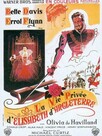 17Drame | 1h46
17Drame | 1h46Theus
“ Reconstitution historique laissant à désirer, et duo d'acteurs constamment dans l'outrance. ” — Theus23 avril 2013 18(1964)de Paul Henreid
18(1964)de Paul HenreidTheus
“ La voleuse Bette Davis vampirise chaque scène et ses partenaires dans ce double rôle efficace marqué toutefois par une certaine afféterie ” — Theus8 novembre 2015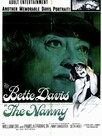 19(1965)de Seth Holt
19(1965)de Seth HoltTheus
“ Un savant mélange de Baby Jane et de Sweet Charlotte où Bette Davis incarne une nounou démoniaque véritablement monstrueuse ” — Theus13 novembre 2015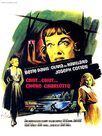 20
20Theus
“ Bette Davis est parfaite en vieille sorcière frustrée mais le film à un côté outrancier qui fini par lasser à la longue. ” — Theus22 avril 2013 21(1934)Drame | 1h23
21(1934)Drame | 1h23 Theus“ Film fondateur dans la carrière de Bette Davis cette emprise lui permit de se faire mépriser avec adoration ” — Theus17 juin 2014
Theus“ Film fondateur dans la carrière de Bette Davis cette emprise lui permit de se faire mépriser avec adoration ” — Theus17 juin 2014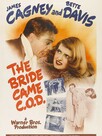 22(1941)Comédie | 1h321 micro-critique | Sa note :
22(1941)Comédie | 1h321 micro-critique | Sa note :Theus
“ Hilarante comédie de course poursuite d’un inconscient tentant de résonner une Bette en furie au postérieur attirant les cactus. Désopilant ” — Theus30 avril 2015 23(1945)1h551 micro-critique | Sa note :
23(1945)1h551 micro-critique | Sa note :Theus
“ Bette Davis force le trait de cette institutrice en herbe et parvient à maintenir l'attention dans cette adaptation beaucoup trop théâtrale ” — Theus8 août 2018 24(1932)1h181 micro-critique | Sa note :
24(1932)1h181 micro-critique | Sa note :Theus
“ Sur fond de lutte des classes ses ombres vers le sud mettent en lumière une Bette Davis délicieusement vamp ” — Theus28 août 2018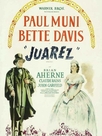 25(1939)Drame | 2h122 micro-critiques | Sa note :
25(1939)Drame | 2h122 micro-critiques | Sa note :Theus
“ Dieterle traduit avec style cette période de l'histoire mexicaine, dans un souci de vérité historique. ” — Theus9 février 2014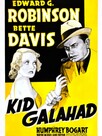 26(1937)Drame | 1h42
26(1937)Drame | 1h42Theus
“ Face à une Bette Davis lumineuse, qui a rarement été aussi sexy, Wayne Morris est inexistant. ” — Theus4 décembre 2016 27(1941)Film d'action, Drame | 1h481 micro-critique | Sa note :
27(1941)Film d'action, Drame | 1h481 micro-critique | Sa note :Theus
“ Astor ardente et féline arrive à prendre le dessus face à une Bette Davis doucereuse. Dommage que les ficelles du mélo sont si grosses ” — Theus30 mars 2015- 28(1948)1h441 micro-critique | Sa note :
Theus
“ L'esprit évoque à peine celui d'un Douglas Sirk et la passion entre les deux Davis est totalement absente ” — Theus30 septembre 2018 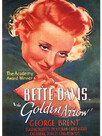 29(1936)1h081 micro-critique | Sa note :
29(1936)1h081 micro-critique | Sa note : Theus“ Comédie loufoque et romantique où Bette Davis se montre irrésistible d'espièglerie en portant le cocard avec la plus parfaite désinvolture ” — Theus17 janvier 2019
Theus“ Comédie loufoque et romantique où Bette Davis se montre irrésistible d'espièglerie en portant le cocard avec la plus parfaite désinvolture ” — Theus17 janvier 2019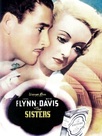 30(1938)Drame | 1h392 micro-critiques | Sa note :
30(1938)Drame | 1h392 micro-critiques | Sa note :Theus
“ Mélodrame plaisant où Bette Davis voit sa vie s'écrouler au propre comme au figuré dans une scène de tremblement de terre étonnante ” — Theus13 février 2015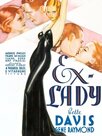 31(1933)1h071 micro-critique | Sa note :
31(1933)1h071 micro-critique | Sa note :Theus
“ C'est étonnant la façon qu'à Bette Davis de pouvoir tirer le meilleur d'un scénario très convenu et d'utiliser la lumière pour elle seule ” — Theus13 août 2018 32(1944)de Delmer Daves2h042 micro-critiques | Sa note :
32(1944)de Delmer Daves2h042 micro-critiques | Sa note :Theus
“ Belle vitrine pour une pléthore de stars de la Warner mises à contribution pour divertir les soldats. Ca swing, ça groove et ça enthousiasme ” — Theus28 novembre 2016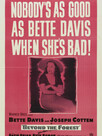 33(1949)de King Vidor
33(1949)de King Vidor Theus“ Bette Davis parvient avec succès à se faire détester de tous et par conséquent on l'adore. Le célèbre "What a dump !" vient de ce film. ” — Theus17 mai 2014
Theus“ Bette Davis parvient avec succès à se faire détester de tous et par conséquent on l'adore. Le célèbre "What a dump !" vient de ce film. ” — Theus17 mai 2014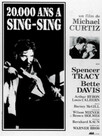 34Drame | 1h21
34Drame | 1h21Theus
“ Banal film carcéral où il est amusant de découvrir Bette Davis toute en magnificence alors qu'elle vient de subir un terrible accident... ” — Theus17 septembre 2018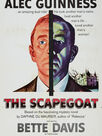 35(1959)de Robert Hamer2 micro-critiques | Sa note :
35(1959)de Robert Hamer2 micro-critiques | Sa note :Theus
“ Adaptation fade, invraisemblable et très négligeable. Le casting sauve à peine cette aventure ratée. ” — Theus8 octobre 2015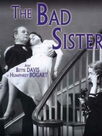 36(1931)Drame | 1h085 micro-critiques | Sa note :
36(1931)Drame | 1h085 micro-critiques | Sa note :Theus
“ Hormis la première apparition de Bette Davis sur un écran rien ne retient l'attention dans ce petit mélo insignifiant et démodé ” — Theus19 octobre 2015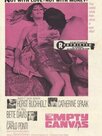 37(1963)Drame | 1h582 micro-critiques | Sa note :
37(1963)Drame | 1h582 micro-critiques | Sa note :Theus
“ Titre anglais : la toile vide, titre français : l'ennui, titre italien : le raseur... Heureusement reste Bette Davis qui fait le minimum ” — Theus23 août 2017




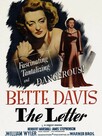

Bette Davis
Birth: April 5, 1908
Massachusetts, USA
Death: October 6, 1989
Paris, France
Childhood
Bette Davis was born as Ruth Elizabeth Davis on April 5, 1908 in Massachusetts. Bette was the first child of newlyweds Ruth and Harlow Davis. Harlow was still going to law school and was not happy about being a father so soon. He felt the same way when Bette’s sister Bobby was born a year later. He was cold towards the girls and their mother tried to make up for it by showering Bette with attention and affection. In 1915, Ruth and Harlow divorced and the two girls would rarely see their father again. Money was tight after the divorce and Ruth took on odd jobs to sent her daughters to good boarding schools.
When Bette was eighteen, she saw the Henrik Ibsen play The Wild Duck and was mesmerized. That’s when Bette knew she wanted to be an actress. She enrolled in the Anderson/Milton school of Theatre and Dance. Although she loved it there, she left school to be a part of George Cukor’s stock theatre company and become a working actress. In 1929, Bette made her Broadway debut in Broken Dishes. It didn’t take long for Hollywood to notice her: in 1930 she was offered a contract by Universal Studio. Bette and her mother, who went everywhere with her, moved to Los Angeles. But the studio did not know what to do with Bette since she didn’t look like the standard glamorous actress. After a year and small roles in six unsuccessful films, Universal did not renew her contract.
Road To Success
Motherhood
Trouble Ahead
The Final Years
In 1977, Bette got a Lifetime Achievement Award. She was incredibly honoured and also happy that it caused a resurgence in her career. Bette had moved to Connecticut to be closer to her daughter, but their constant fighting and her new film offers caused her to go back to L.A. In 1979 she hired Kathryn Sermak as a personal assistant. It made her feel less alone and they would be close until the end of Bette’s life. In that same year, her sister Bobby passed away, which saddened her deeply. Again, she threw herself into work and she earned an Emmy Award for her work in the TV-movie Strangers and played opposite fellow Hollywood legend James Stewart in Right of Way. Her name became well-known with younger audiences thanks to the hit song Bette Davis Eyes by Kim Carnes, for which she was grateful.
In 1983 Bette was diagnosed with breast cancer and underwent a mastectomy. Just as she was about to be released from the hospital, she suffered four strokes, which left her partially paralyzed. Recovering was agony for Bette, who yelled and cursed at the hospital staff. But she slowly learned to use her muscles again. She even worked again, appearing in a small role in Murder with Mirrors, but she was shocked to see how old and frail she looked in the film. Her daughter B.D. and her husband anounced that they had become born-again Christians, which stunned Bette. But she was in for a bigger surprise when her daughter released My Mother’s Keeper, a tell-all book about their relationship. Bette was portrayed as an overbearing, selfish and manipulative alcoholic. She was absolutely devastated and many people were outraged on her behalf that the book was published just when Bette was so frail. Bette would never speak to B.D. again and she started working on her own memoir This ‘N That. The last years of her life, she went on talk shows and travelled to accept career achievement awards, which she loved to get. On September 22, 1989 Bette collapsed while accepting a award in Spain. She was taken to The American Hospital in Paris, where they found out the cancer had returned. She passed away there on October 6, 1989. Bette Davis was buried next to her mother and sister and her tombstone read ‘She did it the hard way’, as she had requested.
Facts: Bette Davis
Read facts you never knew about Bette Davis:
Bette had been a decorated Girl Scout as a child and even became a Girl Scout leader as an adult, despite her busy career.
Bette was so close to her mother Ruth and sister Bobby that they called themselves the ‘three musketeers’ and they lived with or close to each other on and off throughout their lives.
She hated her debut screen test for Universal Pictures so much, that she ran from the projection room and figured that she wasn’t made to appear in movies.
When Bette got hired by Universal, they felt that she wasn’t sexy enough for a lot of roles. In fact, Bette overheard an executive say: ‘She’s got as much sex-appeal as Slim Summerville. Who wants to get her at the end of the picture?’.
At the time, actresses were supposed to be beautiful and glamorous in movies. Therefore, many actresses rejected the role of Mildred in Human Bondage. Bette actually wanted to play the ugly and unsympathetic Mildred and went all out in the role. People around her predicted it would be the end of her career, but it actually resulted in her first Academy Awards nomination.
Bette’s court case to get out of her contract at Warner Bros. was seen as self-indulgent at the time. She was even called a ‘naughty young lady’ at the trial. Only six years later, Olivia de Havilland had a similar court case and won.
When her second husband Arthur Farnsworth died from an untreated skull fracture, rumours were rampant that Bette had caused it by pushing him during one of their fights. There was even an inquest, but Bette was cleared of the accusations.
Bette was the first female president of the Academy of Motion Pictures Arts and Sciences. But since she rejected the idea of being just a figurehead, she faced major resistance from the committee and resigned quickly.
Although What Ever Happened to Baby Jane? was very successful, Bette struggled to find roles after that due to her age. So she placed an employment ad in The Hollywood Reporter in which she described herself as ‘mobile still and more affable then rumor would have it’. Some thought it was funny, though others saw it as a sad cry for attention.
Before her falling out with her daughter B.D., Bette and her then 11-year old grandson Ashley starred in the film Family Reunion together.
Bette’s money was mostly spent on supporting her family. She financially supported her mother, sister and daughter and son-in-law for almost her entire life and had to pay large sums of money to her ex-husbands as well.
Her daughter B.D. became a born-again Christian and tried to convert Bette, who refused. B.D. then released a tell-all book about her mother and became a minister. She now runs the B.D. Hyman Ministry and has a religious YouTube channel.
Bette was the first actor of any gender to receive 7,8,9 and 10 Academy Award Nominations in the acting categories.
‘She did it the hard way’ is written on her sarcophagus, as per her request.
One of her Academy Awards was up for auction in 2002. Steven Spielberg bought it and donated it back to the Academy.
https://www.classichollywoodcentral.com/cat/profile/
Biographie Bette Davis
Sa carrière s'étend sur une soixantaine d'années et elle participera à plus de cent films. L'on comprend aisément qu'elle ait hérité des surnoms fort évocateurs de « Reine d'Hollywood » ou encore « Première Dame du cinéma américain ».
Premiers pas au théâtre et au cinéma
Bette Davis passe sa petite enfance dans la ville de Boston où elle grandit aux côtés de Barbara Davis, sa sœur et de Ruth Davis, sa mère laquelle se sépare de son époux en 1915.
Bette Davis monte sur scène pour la première fois dans le cadre d'une représentation scolaire et joue le rôle d'une fée dans « Le songe d'une nuit d'été ».
Peu après, elle décide de s'initier à la danse auprès de Martha Graham. Pendant la même période, la jeune femme fréquente l'École d'Arts Dramatiques de John Murray Anderson sise à New York pendant trois ans.
Elle fait ses débuts au théâtre en 1928 lorsqu'elle intègre la troupe de George Cukor. Le succès arrive en 1929 lorsque la jeune comédienne joue dans « The earth between » produit dans un théâtre new-yorkais.
Fort de ce succès, Bette Davis intègre officiellement les scènes de Broadway et offre une prestation théâtrale dans « Broken Dishes ».
Après deux ans de scène, elle se fait remarquer par les studios Universal Pictures. Elle apparaît pour la première fois sur les écrans en 1931 dans « The bad sister ».
Bien qu'ayant vécu une expérience enrichissante, celle-ci ne fut pas déterminante pour la carrière de Bette Davis dont le contrat auprès d'Universal Pictures ne sera pas renouvelé.
Elle aura d'autres expériences décevantes auprès d'autres maisons de production comme Columbia Pictures ou encore RKO.
Alors qu'elle est sur le point de revenir à son premier amour à savoir le théâtre, elle est contactée par l'acteur George Arliss qui lui donne l'opportunité d'interpréter le rôle principal à ses côtés dans « L'homme qui jouait à être Dieu » produit par la Warner Bros et qui sortira en 1932, année de son mariage avec Harmon O. Nelson qui durera six ans.
Le film rencontre un franc succès et Bette Davis obtient un contrat chez Warner Bros.
Un succès phénoménal
Ses débuts chez Warner Bross sont plutôt laborieux. Bette Davis doit batailler fort au sein d'une maison de production qui mise surtout sur les acteurs et produit principalement des films de gangsters.
N'étant pas du genre à se laisser faire, l'actrice sait néanmoins se faire entendre et tourne dans 25 films en l'espace de quatre ans.
Entre temps, Bette Davis met la pression à la Warner pour interpréter Mildred Roger dans le film « L'emprise » qu'elle tournera peu après. Elle se mettra dans la peau d'une femme odieuse voire détestable.
L'actrice reçoit une excellente critique mais le succès commercial n'est pas au rendez-vous.
En 1936, c'est la consécration lorsqu'elle interprète le rôle de Joyce Heath dans « L'intruse ». Sa fabuleuse prestation lui vaut de remporter l'Oscar de la meilleure actrice.
S'ensuit alors une période plutôt difficile : après s'être vue refuser des rôles auxquels elle aspirait, elle est affectée à des productions réellement médiocres. Bette Davis décide alors de s'envoler pour Londres et de quitter la maison de production qui lui intente un procès.Bette Davis est perdante. Elle restera finalement au sein de la Warner Bros où se verra, malgré tout, proposer des bons rôles.
En 1937, son come-back à Hollywood se fait sous les meilleurs auspices. Elle apparaît dans « Femmes Marquées » où elle donne la réplique au grand Humphrey Bogart.
Elle participe ensuite à des films spécialement créés pour elle. Avoir avoir refusé le rôle principal dans « Autant en emporte le vent », elle joue dans « L'insoumise » qui lui vaudra son second Oscar.
La carrière de Bette Davis est bien lancée et celle-ci fera encore plus fort dans les années qui suivent. Elle enchaînera les succès et l'on citera entre autres « La lettre » réalisé en 1940 qui fut également l'année de son mariage avec Arthur Farnsworth qui décède trois ans plus tard, « La vipère » réalisé en 1941 ou encore « Une femme cherche son destin » réalisé en 1942 .
En tout, elle sera nominé sept fois aux oscars pendant les années 1940.
En 1945, elle se remarie avec William Grant Sherry avec qui elle a une fille, Barbara. 1949 est sa dernière année chez Warner, pendant laquelle elle apparaît dans « La garce ».
En plus de quitter cette maison de production, elle se sépare également de son mari.
Fin de carrière
A la fin des années 1940, Bette Davis se sent libre mais ne met pas pour autant sa carrière entre parenthèse. Elle entame immédiatement le tournage de « L'ambitieuse » qui sortira bien des années plus tard.
En 1950, elle interprète le rôle de Margo Channing dans « Ève », considéré par beaucoup comme étant le plus beau film de toute sa carrière.
Elle obtiendra d'ailleurs une nomination aux oscars. Cette même année, elle se marie avec son partenaire à l'écran Gary Merill. Le couple adoptera une petite fille prénommée Margot et un petit garçon prénommé Michael avant de se séparer en 1960, après dix ans de mariage.
Après avoir atteint les sommets de la gloire, Bette Davis semble être en fin de carrière. Les années 1950 sont mornes mis à part « La star » réalisé en 1952 et pour lequel elle obtient une nomination aux Oscars.
Au début de la décennie suivante, Bette Davis renoue une nouvelle fois avec le succès dans « Milliardaire pour un jour » et « Qu'est-il arrivé à Baby Jane » en 1961.
En 1962, l'actrice n'a plus aucune proposition de tournage et envoie une annonce dans un journal hollywoodien. Cette annonce est remarquée par un haut responsable de la Warner Bros qui lui propose de tourner dans « La mort frappe trois fois » qui sortira en 1964.
Cette même année, elle apparaît dans « Chut... Chut, chère Charlotte ».
En fin de carrière, Bette Davis, ne tourne plus autant qu'avant. Elle fait toutefois une apparition magistrale dans « L'argent de la vieille » réalisée en 1972 et dans « Les baleines du mois d'août » en 1987.
A la fin de sa vie, son parcours est quelque peu terne : elle participe à des petits films tout en faisant quelques apparitions à la télévision et au théâtre.
Elle rendra son dernier souffle à l'âge de 81 ans dans la ville française de Neuilly-sur-Seine.
Bette Davis, la garce ultime du grand écran
« J'étais une terreur légendaire ». L'actrice culte de l'âge d'or de Hollywood, Bette Davis, était tout aussi impitoyable hors écran que sur grand écran. Tour à tour meurtrière, perverse, manipulatrice ou sorcière dans la plupart de ses rôles, celle dont un seul petit mouvement de la bouche ou des yeux pouvait provoquer l'effroi, restera, à jamais, la mieux à même de jouer les Cruella au cinéma.
Publié le MERCREDI, 05 AVRIL 2017
par Claire Bonnot
Page 1|2
Photo12.com - Collection Cinema / Photo12
Une sœur sadique dans Qu'est-il arrivé à Baby Jane ?
Alors que Hollywood s'est emparé du conflit d'anthologie qui divisait - hors-écran - les deux stars du tournage, Bette Davis et Joan Crawford, avec la série Feud signée Ryan Murphy, le film Qu'est-il arrivé à Baby Jane ? n'est pas en reste en terme de coups bas. Bette Davis, alors la cinquantaine, est une icône de l'âge d'or hollywoodien un peu sur le retour. Célèbre pour ses rôles de (très) vilaine fille et sa capacité à jouer à la langue de vipère dans le petit cercle hollywoodien, le rôle que lui offre Robert Aldrich en 1962 lui va comme un gant et restaure son aura de grande (méchante) comédienne. Elle sera d'ailleurs nominée pour l'Oscar de la meilleure actrice. Elle joue Jane Hudson, une enfant vedette et starifiée (une poupée « Baby Jane » est même créée à son effigie) des années 20. Mais à l'adolescence, le public l'a complètement oubliée et porte aux nues sa sœur Blanche (Joan Crawford), nouvellement actrice. Coup du sort : cette dernière subit un terrible accident de voiture et perd l'usage de ses jambes. Démunie, infirme, elle devient dépendante de sa sœur qui, jalouse et aigrie, la séquestre et la maltraite. Bette Davies est terriblement effrayante dans ce rôle de vieille femme folle furieuse et grimaçante, fardée à outrance comme un clown monstrueux. Cette farce macabre est une critique à l'encontre de l'usine à rêves de Hollywood qui produirait des cauchemars.
Une sœur sadique dans Qu'est-il arrivé à Baby Jane ?
Une femme adultère et meutrière dans La Lettre
« Son jeu fait merveille dans ce rôle de bourgeoise à lunettes et à ouvrage de dentelle, cachant derrière ce petit visage intelligent et têtu un monde pervers de passions incœercibles. » écrira André Bazin dans L'Écran français, en 1947. Jouant sur l'ambiguïté de jeu innée chez Bette Davis, le réalisateur met en scène une femme bourgeoise et apparemment bien sous tous rapports qui assassine froidement son amant alors que son mari, fou amoureux, ne la soupçonne pas une seconde de l'avoir trompé et d'avoir tué.
Une femme adultère et meutrière dans La Lettre
Une épouse diabolique et vénale dans La Vipère
Autre collaboration avec le réalisateur William Wyller en 1941, le mélodrame La Vipère porte bien son nom. À l'aube du XXe siècle, dans une petite ville américaine, Regina (Bette Davis) est mariée à un banquier qui se remet d'une crise cardiaque dans une maison de repos. Corrompue et âpre au gain, elle cherche à faire de l'argent avec une opération immobilière. Pour obtenir l'argent de son époux, elle fait faire la demande par sa fille, Alexandra. Le petit manège ne fonctionne pas. Après une deuxième tentative d'escroquerie avec leur fils, cette fois-ci, le mari n'est plus dupe. Après avoir été cupide et manipulatrice, l'épouse se fait monstrueuse en laissant mourir son mari soumis à une énième crise cardiaque. Ce rôle de femme immonde lui vaudra une nomination à l'Oscar et la consécration d'actrice populaire.
Une épouse diabolique et vénale dans La Vipère
Archive Photos / Intermittent
Une manipulatrice de l'amour dans L'Emprise
La jeune actrice fétiche de la Warner se bat pendant des mois, en 1934, pour obtenir le rôle de Mildred Rogers dans L'Emprise de John Cromwell, produit par la RKO. Elle y parvient, évidemment. Elle racontera dans son autobiographie The Lonely Life qu'elle soupçonnait la Warner de ne pas vouloir qu'elle incarne ce personnage par peur que le public l'identifie à celui-ci : « Mes employeurs considéraient que le fait de me confier le rôle d'une héroïne aussi détestable équivaudrait à un suicide artistique... Ils m'identifiaient, je suppose, au personnage, et retenaient que nous étions bien dignes l'une de l'autre. » Dans ce film adapté d'un roman de Somerset Maugham, Bette Davies incarne une jeune serveuse dont un peintre, piet bot, tombe éperdument amoureux. Elle ne l'aime pas mais profite de la situation jusqu'à tomber sur un autre homme qu'elle décide d'épouser. Effondré, le jeune homme cherche à l'oublier avec une autre femme. Mais quand Mildred revient enceinte et esseulée, il laisse tomber sa conquête pour l'aider et l'aimer. Impitoyable, celle-ci le délaisse à nouveau pour un de ses amis. Quand elle revient (encore), le jeune homme lui avoue son dégoût pour elle. Elle deviendra odieuse et destructrice. Le regard torve et glacial de Bette Davis en dit long et fait froid dans le dos.
Une manipulatrice de l'amour dans L'Emprise
Tamasa Diffusion
Une vieille dame riche et cruelle dans L'Argent de la vieille
Maquillée à outrance comme à son habitude, Bette Davis incarne une sorte de vieille peau revêche et richissime qui s'adonne à un petit jeu bien cruel avec des habitants d'un bidonville à Rome. Chaque année, elle dispute une partie de cartes un peu spéciale avec eux : elle parie toujours un million de livres qu'ils perdent invariablement. La rusée a toujours plus d'argent pour remporter la mise finale. Eux ne désespèrent pas, sûrs de pouvoir un jour empocher L'Argent de la vieille, titre de ce film italien de Luigi Comencini sorti en 1972.
Une vieille dame riche et cruelle dans L'Argent de la vieille
Une peste façon Scarlett O'Hara dans L'Insoumise
En 1938, à l'âge de 30 ans, Bette Davis reçoit son second Oscar et démarre sa grande carrière après avoir ébahi le public en monstre de coquetterie et de cruauté féminine dans L'Insoumise. Ce film de Jack Warner a des airs de Autant en emporte le vent et ce rôle, de Scarlett O'Hara (elle avait d'ailleurs refusé de l'interpréter deux ans auparavant). Vers 1860, dans la bonne société de la Nouvelle-Orléans, la jeune rebelle Julie Marsden a de nombreux prétendants et prend beaucoup de plaisir à les éconduire. Alors qu'elle jette son dévolu sur Pres Dillard, elle est finalement éconduite après un faux-pas en société, qu'elle a fait bêtement pour l'humilier. Atterrée, elle cherche à le reconquérir à son retour à la ville. Mais le jeune homme est marié. Alors qu'il est atteint de la fièvre jaune, elle parviendra à aller, elle-même, le soigner, arrachant ainsi ce dernier à son épouse déguisant son vil dessein en abnégation. Un monstre de femme stratégique.
Une peste façon Scarlett O'Hara dans L'Insoumise
Silver Screen Collection / Contributeur
Une mère castratrice dans The Anniversary
À l'âge de 60 ans, Bette Davis continue de fasciner en monstre de froideur. Dans la comédie The Anniversary de Roy Ward Baker en 1968, elle incarne une veuve et mère abusive qui réunit tous les ans ses trois fils pour célébrer son anniversaire de mariage avec son défunt mari. Le but ? Exercer sa domination psychologique et pourrir la vie de sa progéniture. Son œil bandé rappelle les pires méchants des contes pour enfants. Son rire, machiavélique, est bel et bien celui d'une infâme sorcière.
Une mère castratrice dans The Anniversary
John Springer Collection / Contributeur
Une folle à lier dans Ville frontière
Un jeune et bel avocat mexicain est rayé du barreau après une rixe. Il parvient à se faire engager comme videur dans un casino situé sur la frontière américano-mexicaine. Le patron veut faire de lui son associé. L'épouse instable du propriétaire (Bette Davis) s'éprend du bel hidalgo. Elle assassine alors froidement son époux. Alors que le jeune homme s'éprend finalement d'elle, elle l'accuse d'avoir tué son mari. Ce drame signé Archie Mayo et sorti en 1935, consacre, encore une fois Bette Davis, garce parfaite du grand écran.
Une folle à lier dans Ville frontière
Une femme superficielle et sans cœur dans La Garce
À la sortie du film en 1949, le Hollywood Reporter titrera : « Bette n'a jamais eu l'air plus abominable. » Dans ce film réalisé par King Vidor, Bette Davis joue Rosa Moline, l'épouse d'un médecin d'une petite ville qui s'ennuie fermement et qui prend un amant. Alors que ce dernier l'éconduit, elle découvre qu'elle est enceinte. L'intendant de son amant, - qu'elle a réussi à récupérer - menace alors de tout révéler à son mari. Ni une ni deux, Rosa le tue. Haineuse envers cette ville et vie qui l'empêchent de réaliser ces rêves de grandeur, Rosa est représentée comme une femme superficielle et détestable dont la rancœur va enlaidir les traits.
Une femme superficielle et sans cœur dans La Garce
Une nounou d'enfer (véritable) dans Confessions à un cadavre
Alors qu'un petit garçon revient d'un séjour en hôpital psychiatrique, une « nanny » (Bette Davis) est embauchée pour s'occuper de lui. Bientôt, il l'accuse de vouloir le tuer. La famille, peu présente, estime que le petit garçon, apparemment tête-à-claques insupportable, est dérangé et dangereux, à tort... L'ange de dévouement que joue, en apparence, Bette Davis est en réalité un monstre de froideur et d'horreur. Ce film britannique réalisé par Seth Holt en 1965 consacre à nouveau l'actrice meilleure garce de tous les temps.
Une nounou d'enfer (véritable) dans Confessions à un cadavre
Une frivole égoïste dans Femme aimée est toujours jolie
Dans ce film datant de 1944, Bette Davis incarne une beauté ravageuse : Fanny Trellis est la femme la plus séduisante et la plus courtisée de tout New York. Pourtant, elle s'est mariée par simple intérêt à un riche homme d'affaires juif plus âgé qu'elle. Elle multipliera les conquêtes et les amants. Jeune femme égoïste et narcissique qui ne s'intéresse qu'à son physique, Fanny Trellis refuse de grandir et d'aimer son prochain dans le contexte des deux guerres mondiales. Quand, plus âgée, elle est touchée par une maladie qui la défigure, la donne va changer.
Une frivole égoïste dans Femme aimée est toujours jolie
Bette Davis movies: 15 greatest films ranked from worst to best
April 5, 2020, marks the 112th anniversary of the birth of one of the screen’s greatest actresses, Bette Davis. For these birthday tributes Gold Derby usually chooses the Top 15 performances of a particular actor. With Davis that task is next to impossible. Davis appeared in close to 90 feature films over her career with probably at least two thirds of them being memorable for some reason. Choosing just 15 will likely result in endless complaints in the comments section over a fan’s particular favorite being left out. In order not to cause too much heartache among readers the following list ranks all of Davis’ Oscar nominated performances and throws in a few personal non-nominated favorites along the way. Her career achievements were such that we could probably run this column every year and only after about half a decade would we run out of films to list.
Davis received 10 Oscar nominations over her career, all in the Best Actress category. Meryl Streep and Katharine Hepburn are the only actresses to exceed that number. Davis won Oscars on her first two nominations for “Dangerous” in 1935 and “Jezebel” in 1938. Strangely Davis won for arguably the two least acclaimed and remembered films of her 10 nominations. The other bids were for: “Dark Victory” (1939), “The Letter” (1940), “The Little Foxes” (1941), “Now, Voyager” (1942), “Mr. Skeffington” (1944), “All About Eve” (1950), “The Star” (1952) and “What Ever Happened to Baby Jane?” (1962). That’s a pretty accomplished group of films, to say the least.
Davis would also find success on television in her later years in a series of television movies. She would win an Emmy Award in 1979 for “Strangers: The Story of a Mother and a Daughter” and also receive three additional Emmy nominations.
Hers is one of the most fascinating lives both on screen and off to come out of classic Hollywood. Her list of acting accomplishments is pretty incredible and it is hard to believe this is the same women who, once when she felt her career was slowing down, took out an ad in Variety which read “Mother of three 10, 11 and 15-Divorcee. American. Thirty years’ experience as an actress in motion pictures. Mobile still and more affable than rumor would have it. Wants steady employment in Hollywood. Has had Broadway. References upon request.”
Take a tour in our photo gallery of her 15 greatest film performances, ranked from worst to best.
15. THE PRIVATE LIVES OF ELIZABETH AND ESSEX (1939)
Director: Michael Curtiz. Writers: Aeneas MacKenzie, Norman Reilly Raine. Starring Errol Flynn, Olivia de Havilland, Vincent Price.
Davis would have likely joined actresses such as Cate Blanchett and Judi Dench on the list of actresses Oscar nominated for playing Queen Elizabeth I but in an embarrassment of riches she had another performance that year in “Dark Victory” that got her a Best Actress Oscar nomination. Davis is in splendid and in grand form as the British monarch.
14. DEATH ON THE NILE (1978)
Director: John Guillermin. Writer: Anthony Shaffer. Starring Peter Ustinov, Mia Farrow, Angela Lansbury.
After the huge success of the 1974 version of “Murder on the Orient Express” this Agatha Christie novel was also adapted for the big screen with grand locations and an extremely talented all-star cast. Davis plays (no surprise here) a crotchety wealthy woman traveling on the pleasure cruise where murders are happening. Davis’ interactions with her flighty nurse played by Maggie Smith are pure onscreen gold.
13. THE CORN IS GREEN (1945)
Director: Irving Rapper. Writers: Casey Robinson, Frank Cavett. Starring Mildred Dunnock, Nigel Bruce, Rhys Williams.
“The Corn is Green” based on the Emlyn Williams play of the same name stars Davis as an idealistic school teacher who seeks to bring education to an impoverished Welsh coal mining town. It is interesting to note that Katharine Hepburn who is often considered Davis’ rival in terms of who was the greatest actress of this era would make a television movie version of the same play thirty years later in 1979 and was nominated for an Emmy in Davis’ old role. She would lose that Emmy however to…..Bette Davis in “Strangers: The Story of a Mother and Daughter.”
12. THE STAR (1952)
Director: Stuart Heisler. Writers: Dale Eunson, Katherine Albert. Starring Sterling Hayden, Natalie Wood, Warner Anderson.
Davis final three Oscar nominations all came for playing actresses. The other two we will get to further on down this list. The least known film of those three nominees is this one simply titled “The Star.” In a case of life imitating art Davis plays an aging Oscar winning actress hoping she still can reignite her film career. Interestingly Davis competed for the Oscar with her future nemesis Joan Crawford although both would lose to Shirley Booth for “Come Back Little Sheba.”
11. THE LITTLE FOXES (1941)
Director: William Wyler. Writer: Lillian Hellman. Starring Herbert Marshall, Teresa Wright, Patricia Collinge.
Lillian Hellman’s acclaimed play provides a terrific meaty role for its lead actress in that of Regina Hubbard Giddens. Set in among an affluent Southern family Regina’s brothers are the sole heirs to her father’s estate and she must rely on her sickly husband for financial support. The play has been produced five times on Broadway with a virtual who’s who of actresses taking the leading role: Tallulah Bankhead, Anne Bancroft, Elizabeth Taylor, Stockard Channing and Laura Linney and Cynthia Nixon alternating in the most recent production. The film adaptation received nine Oscar nominations in all the major categories but went home empty handed. Davis would lose to Joan Fontaine in “Suspicion.”
10. DANGEROUS (1935)
Director: Alfred E. Green. Writer: Laird Doyle. Starring Franchot Tone, Margaret Lindsay, Alison Skipworth.
Davis won her first Best Actress Oscar for this film but it is widely thought to have been a makeup prize for her not even being nominated the year before for her breakout role in “Of Human Bondage.” The film casts Davis as a tempestuous actress who has fallen on hard times after a promising start. She finds a chance at love with an architect who admires her but when he sees her true colors, he becomes disillusioned with her.
9. HUSH…HUSH, SWEET CHARLOTTE (1964)
Director: Robert Aldrich. Writers: Henry Farrell, Lukas Heller. Starring Olivia de Haviland, Joseph Cotten, Agnes Moorehead.
After the surprise acclaimed success of “Whatever Happened to Baby Jane?” Bette Davis and Joan Crawford were slated to reunite in this similarly themed gothic macabre film. As documented on the recent TV series “Feud: Bette and Joan” Crawford departed shortly into filming and was replaced with Olivia de Haviland. The film casts Davis as another reclusive woman hiding out in a large mansion as in the first film and once again living in torment over secrets from the past.
8. MR. SKEFFINGTON (1944)
Director: Vincent Sherman. Writers: Julius J. Epstein, Philip G. Epstein. Starring Claude Rains, Walter Abel, George Coulouris.
Davis received her seventh Oscar nomination and one of her more frequent and favorite co-stars Claude Rains received one of his four Supporting Actor nominations (without ever winning one) for this story of a society woman who enters into a loveless a marriage to save her beloved brother from criminal charges. Davis and Rains would lose their Oscar bids to Ingrid Bergman in “Gaslight” and Barry Fitzgerald in “Going My Way” respectively.
7. JEZEBEL (1938)
Director: William Wyler. Writers: Clements Ripley, Abem Finkel, John Huston. Starring Henry Fonda, George Brent, Fay Bainter.
Three years after her first Best Actress Oscar Davis would once again take home the prize this time for her role as a conceited southern belle whose antics drive away her fiancée whom she tries to win back. Fay Bainter would take the Supporting Actress prize making this one of the rare times the same film took both female acting awards. Davis’ two wins so early in the Academy history would later create a strange situation for her Oscar-wise. She had been awarded twice which was about the maximum most people were awarded back then yet her best work and most remembered films were still to come.
6. THE LETTER (1940)
Director: William Wyler. Writers: W. Somerset Maugham, Howard Koch. Starring Herbert Marshall, James Stephenson, Gale Sondergaard.
Seven Oscar nominations including Best Picture, Director and Actress went to this film about a woman who shoots a man to death and claims self-defense. Set in South-East Asia the film is notable for many reasons but one of them being the fact that Davis so bravely takes on the role of a not very likeable woman. While other actresses did and still do worry a great deal about their image Davis always seemed to take delight in playing less than likeable characters. Davis would lose this Oscar to Ginger Rogers for “Kitty Foyle.”
5. DARK VICTORY (1939)
Director: Edmund Goulding. Writer: Casey Robinson. Starring George Brent, Humphrey Bogart, Geraldine Fitzgerald, Ronald Reagan.
1939 is often cited as one of if not the greatest years in the history of filmmaking. “Gone with the Wind” swept the Oscars winning 8 awards including Best Picture and Best Actress for Vivian Leigh. Among the films it beat where “The Wizard of Oz,” “Mr. Smith Goes to Washington,” “Wuthering Heights” and Davis’ film “Dark Victory.” In the film Davis plays a care free young socialite who must face the fact that she has a terminal brain tumor. The film is notable today in that it features future President of the United States Ronald Reagan in a supporting role.
4. OF HUMAN BONDAGE (1934)
Director: John Cromwell. Writers: Lester Cohen, W. Somerset Maugham. Starring Leslie Howard, Frances Dee, Alan Hale.
Davis began her film career in 1931 and appeared in roughly 20 films before she found her breakthrough role three years later in this adaptation of the acclaimed novel. The film revolves around the story of a young man who falls in love with a crass loudmouthed waitress and the two descend into a destructive relationship. Davis received superlative reviews for the film with Life Magazine calling the performance “probably the best performance ever recorded on the screen by a U.S. actress.” It was a huge shock when Davis wasn’t even nominated for an Oscar for the film and for the only time in its history the Academy allowed people to cast write in votes on the final ballot. The write in campaign didn’t work though and the Best Actress award went to Claudette Colbert in “It Happened One Night.” (Ironically Davis had been offered that role also but her studio refused to let her out of her contract to take it on.)
3. WHATEVER HAPPENED TO BABY JANE (1962)
Director: Robert Aldrich. Writer: Lukas Heller. Starring Joan Crawford, Victor Buono, Wesley Addy.
The pairing of Bette Davis and Joan Crawford on this film would become the stuff of legend. The tremendous clashes in personality and ego would rise to the level that the two would be played by Jessica Lange and Susan Sarandon in the recent acclaimed mini-series. Davis plays a former child star who lives reclusively with her handicapped sister played by Crawford. The resentment between the two has degenerated to the point where Davis spends most of her days tormenting her sister while also hoping for her big career comeback. When Davis earned a Best Actress Oscar nomination for the film and Crawford didn’t Crawford bizarrely volunteered to accept the award for the actresses who weren’t present at the ceremony. Anne Bancroft won the award for “The Miracle Worker” so Crawford was able to take the stage and accept the Oscar for her causing Davis great grief as she saw her much coveted third Oscar be carried off by her greatest enemy.
2. NOW, VOYAGER (1942)
Director: Irving Rapper. Writer: Casey Robinson. Starring Paul Henreid, Claude Rains, Gladys Cooper.
“Now, Voyager” remains one of Davis’ most beloved films and her character of Charlotte Vale is still an inspiration for many to this day. (Carrie Fisher famously named her autobiographical lead character in “Postcards from the Edge” Suzanne Vale and cast Mary Wickes one of “Now, Voyager”’s remaining living cast members in the role of her grandmother.) The film was quite ahead of its time in how it shows the benefits that psychiatry can have in a person’s life. Davis plays a shy, middle aged spinster who lives under her mother’s dominating finger. Mocked by her relatives and virtually friendless she proceeds to have a mental breakdown. This lands her in a psychiatric facility run by Claude Rains as the wise Dr. Jaquith. Here Davis learns to stand up for herself and tolerate her meddlesome mother’s domineering nature. Davis’ test of her new-found confidence comes when she takes a trip on a pleasure cruise where she finds love but more importantly realizes that she isn’t the loser she has thought she was all her life. (On a personal note watching this film on the top deck of a cruise ship under the stars during the 2016 TCM Classic Film Cruise was about as thrilling a movie experience as this writer has ever had.) Davis and Gladys Cooper as her mother were both Oscar nominated but lost Lead and Supporting Actress to the stars of “Mrs. Miniver” Greer Garson and Teresa Wright.
1. ALL ABOUT EVE (1950)
Director and writer: Joseph L. Mankiewicz. Starring Anne Baxter, George Sanders, Celeste Holm.
“All About Eve” is as close to perfect that a movie can get. The story of a legendary Broadway actress who befriends a young woman she thinks is just a star struck girl only to find out she is a conniving manipulative amoral woman trying to build her own career won six Oscars including Best Picture, Director, and Screenplay. Davis likely would have received her third Best Actress award for the film but co-star Anne Baxter was also placed in lead actress so their competition as well as the presence of Gloria Swanson in “Sunset Boulevard” resulted in a surprise win for Judy Holliday in “Born Yesterday” (a rare comic performance to win Best Actress.)
---------------------------------------------------------------------
https://cinemur.fr/personnes/bette-davis-64161
Reviews of Bette Davis Films during her “Favorite of the Month” for May 2015 by clicking on the links below:
Reviews of Leslie Howard in Bette Davis Films his time as “Favorite of the Month for April 2016” by clicking on the links below:
Reviews of Charles Boyer in Bette Davis films during his time as “Favorite of the Month for March 2017.”
Reviews of Joan Blondell in Bette Davis films during her time as “Favorite of the Month for April, 2017″